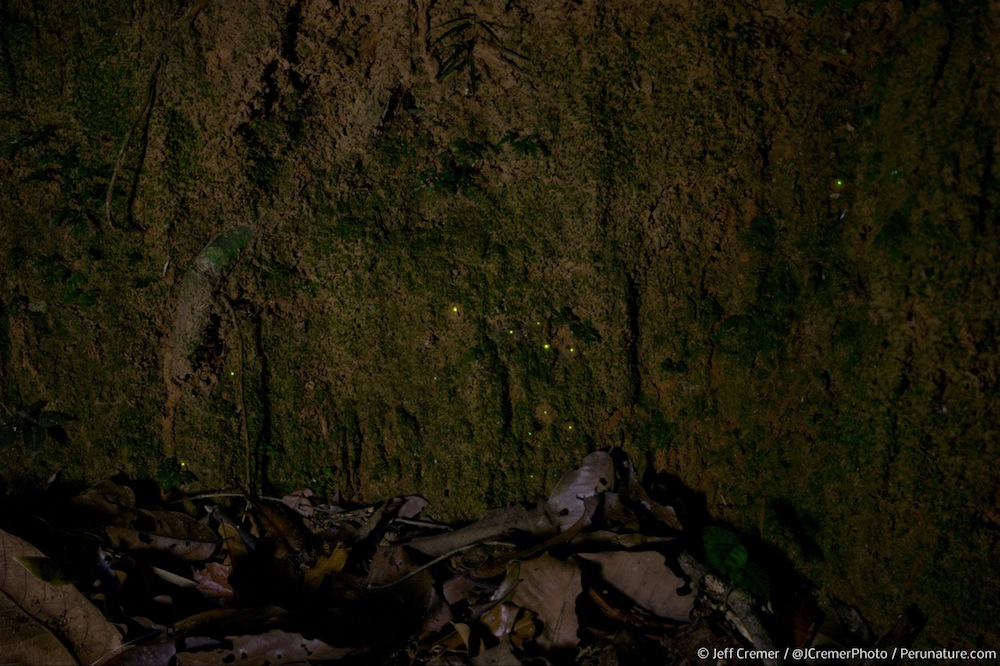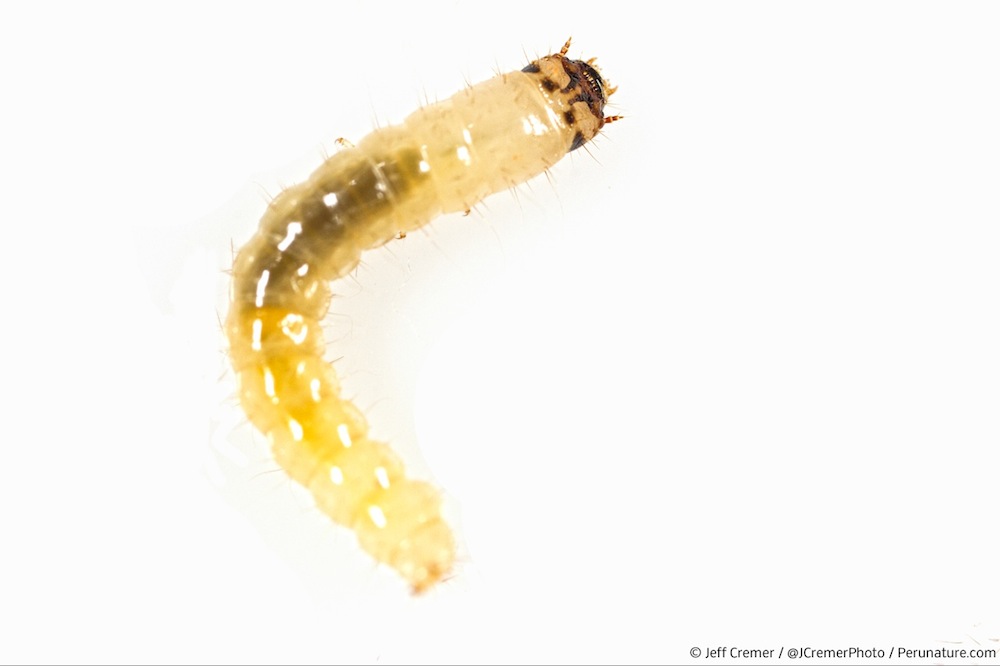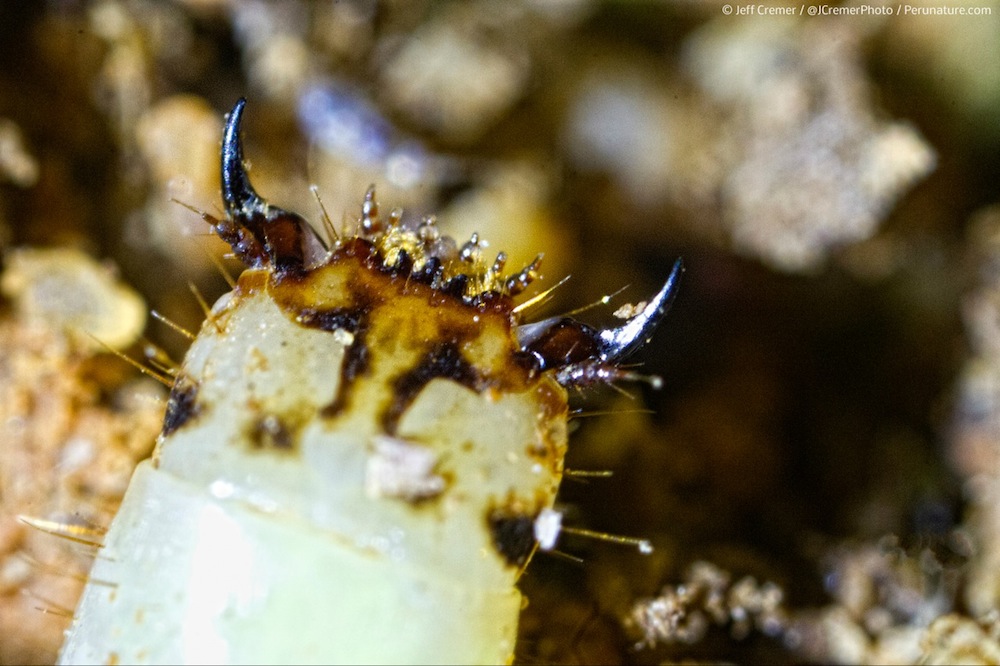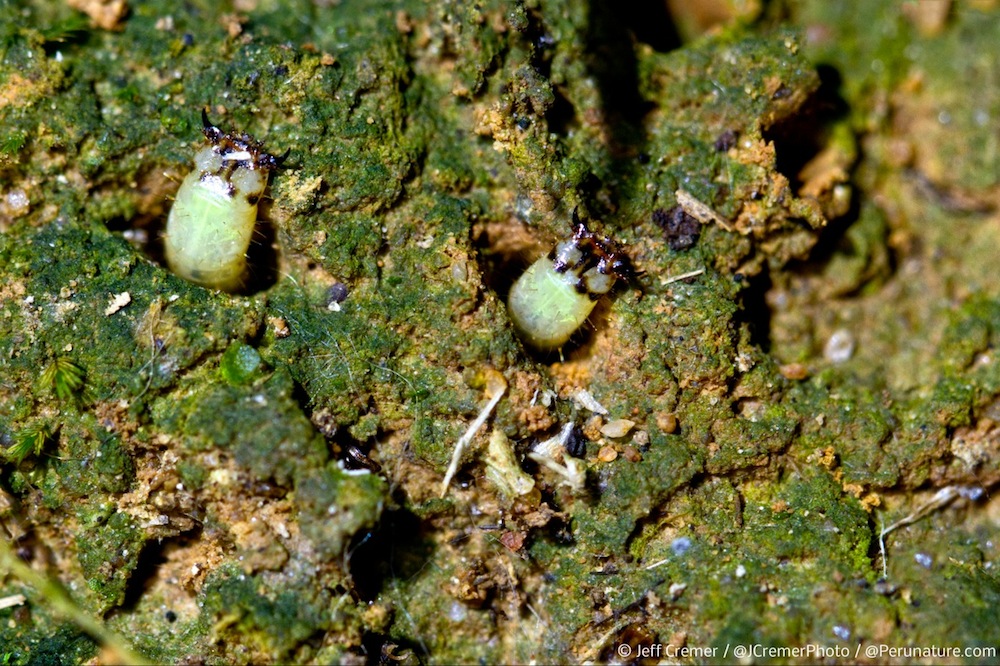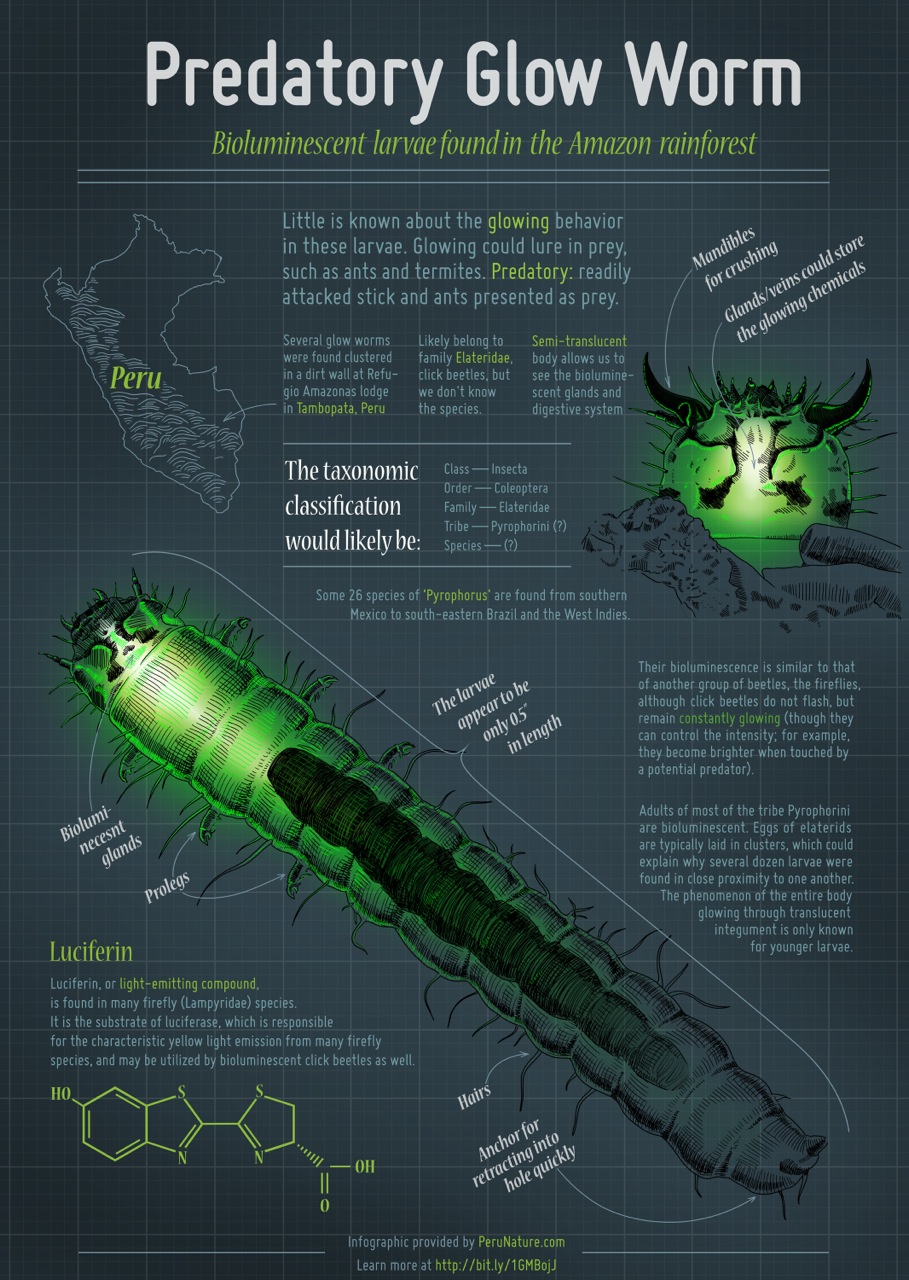A few years ago, nature photographer Jeff Cremer discovered tiny pinpricks of glowing light in a wall of Earth in Peru. When he took a closer look, he discovered a mysterious species of glow worm. Cremer brought the glow worm to the attention of entomologists. It turned out that these little glowing worms were actually larvae of a beetle species. Though scientists still don't know the exact species, similar click beetles have been found in Brazil. [Read the full story on the glow worms] (Photo credit: Jeff Cremer/Perunature.com)
Night light
Cremer saw the first signs of the mysterious beetle in a wall of Earth near the Tambopata Research Center in the Peruvian Amazon. When he got a closer look, he found several dozen worms that were about 0.5 inches (1.27 centimeters) in length.
Predatory worm
When entomologists took a look, they realized that the glow worms were larvae from a spcies of click beetles, which belong to the family Eliteredae. Click beetles typically make a clicking motion to quickly escape predators. Though over 10,000 of the beetles have been identified, only 200 are bioluminescent, or give off light.
Hungry predator
The beetle larvae likely glow green to lure prey such as ants and stick insets. When presented with these insects, the worms readily devoured them. While most beetles dine on flowers and other plant-matter, their larvae are mostly predatory. The insects wait with jaws open, and as soon as an ant or a termite flies in, their jaws clamp shut.
Get the world’s most fascinating discoveries delivered straight to your inbox.
Bioluminescent relatives
Though no one knows exactly what species of click beetle they've found, the mysterious creature may be related to the Brazilian fire beetle. These fire beetles colonize termite mounds and create ethereal glowing towers in the night. These bizarre glowing mounds can be seen at Emas National Park in Brazil.
Visible insides
Like an X-ray, the bioluminescence lights up the digestive system and glands inside the larval body. Most bioluminescent species, including Brazilian fire beetles, glow because of a molecule known as luciferin, which may be produced inside the glands revealed here.
Family members
The team doesn't yet know if this is a completely new species of glow worm or a subspecies of click beetle related to the Brazilian fire beetles. They are currently consulting with experts in Brazil to find out.
Attack!
The researchers likened the tiny but voracious larvae to the man-eating worms in the campy 1990 film "Tremors." Just like those monsters, these little glow worms lie in wait in the Earth and then emerge to clamp their jaws shut over ants or other insects. Of course, these larvae are unlikely to eat humans any time soon.
Many unknowns
The click beetle family, or Eliteredae, includes thousands of species, but the Pyrophorus group includes about 26 species that range from Mexico to the West Indies. Unlike other bioluminescent bugs, such as flickering fireflies, these predatory larvae are cosntantly glowing.

Tia is the editor-in-chief (premium) and was formerly managing editor and senior writer for Live Science. Her work has appeared in Scientific American, Wired.com, Science News and other outlets. She holds a master's degree in bioengineering from the University of Washington, a graduate certificate in science writing from UC Santa Cruz and a bachelor's degree in mechanical engineering from the University of Texas at Austin. Tia was part of a team at the Milwaukee Journal Sentinel that published the Empty Cradles series on preterm births, which won multiple awards, including the 2012 Casey Medal for Meritorious Journalism.


